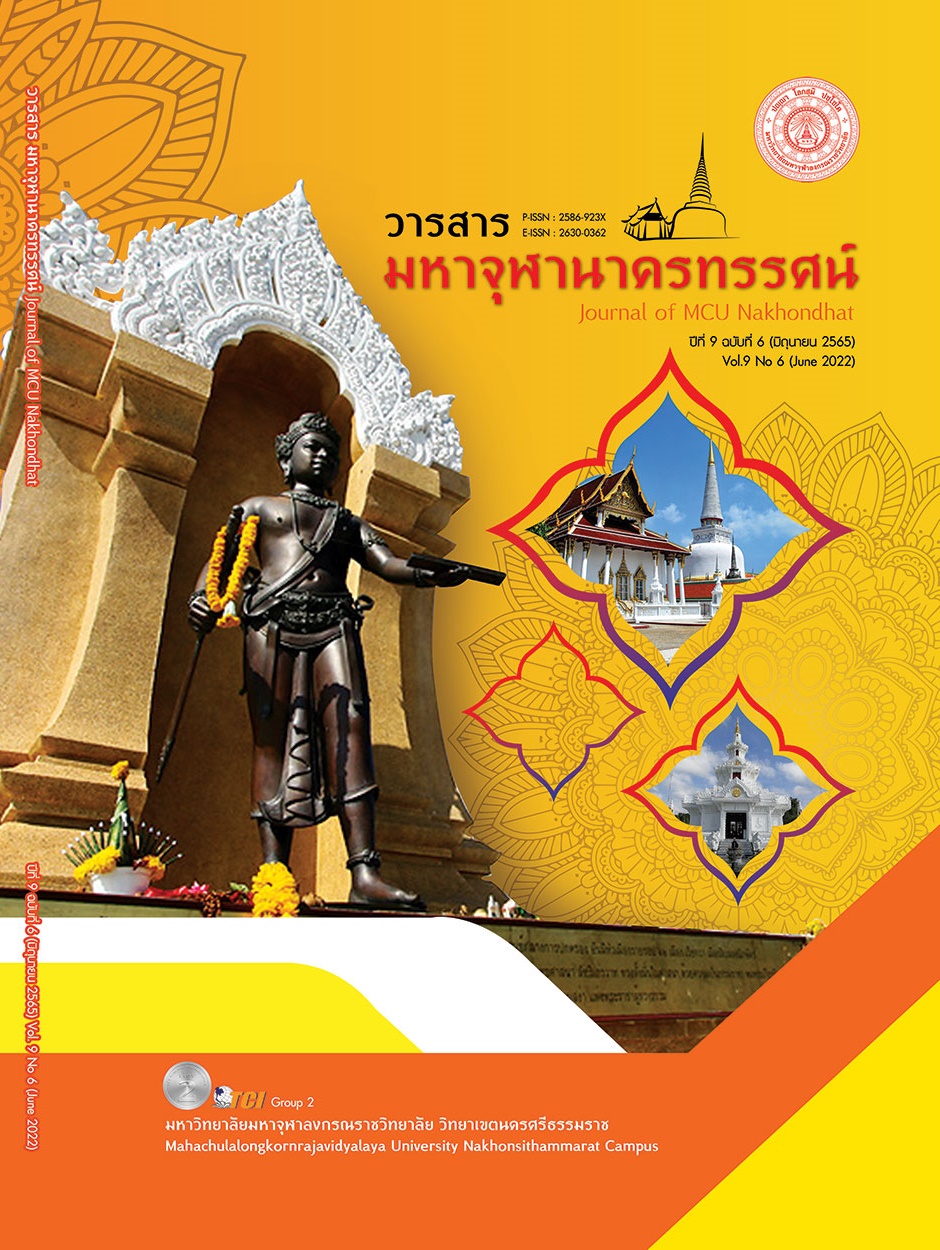MANAGEMENT OF RELIGIOUS TREASURES IN BUDDHIST TEMPLES
Main Article Content
Abstract
Management of religious treasures in Buddhist temples According to the Sangha Act, B.E. 2505 There are provisions relating to religious treasures as follows: “Section 40 Religious treasures are divided into 2 types: 1) central religious treasures, which are religious properties that are not belonging to a particular temple; 2) temple religious treasures, which are properties of any temple Maintain and manage the central religious treasures to be the powers and duties of the National Office of Buddhism. Owning that religious treasure, providing benefits, giving advice and assisting in the maintenance and management of the temple religious treasure in the central area that operates for the benefit itself in accordance with the ministerial rules, laws, regulations, orders and resolutions of the Sangha Sangha Council concerned With temples in Buddhism, it is a religious place that is used for religious activities and is the residence of the monks to practice the Dharma and Discipline and carry out the activities of the monks. It is a place for ceremonies and merit making of all Buddhist companies. And it is a place to educate and train people to become good members of society. Property Management in the Temple Section which the abbot is in charge of the authority because the temple is a juristic person Therefore, it is necessary to act in accordance with the juristic person's authority. which a juristic person is something that has no soul unable to express intentions or act on their own The abbot has the authority to manage the temple. According to the Sangha Act, B.E. 1962, Section 37 Maintenance of the temple The care and maintenance of the religious treasures of the temple in accordance with the prescribed method. Management of religious treasures in temples requires a system set guidelines and methods of practice in organizing the benefits of the religious treasures of the temple in order to properly fit the current economic, social and environmental conditions
Article Details

This work is licensed under a Creative Commons Attribution-NonCommercial-NoDerivatives 4.0 International License.
References
กนก แสนประเสริฐ และคณะ. (2545). รายงานสัมมนาเชิงปฏิบัติการกับการจัดการสำหรับนักบริหารหลักสูตร. ใน รัฐประศาสนศาสตรมหาบัณฑิต สาขารัฐประศาสนศาสตร. สถาบันบัณฑิตพัฒนบริหารศาสตร์.
กรมการศาสนา. (2545). คู่มือการพัฒนาวัด อุทยานการศึกษาในวัด ลานวัด ลานใจ ลานกีฬา. กรุงเทพมหานคร: โรงพิมพ์การศาสนา.
จุฬารัตน์ บุณยากร. (2551). คู่มือการดูแลจัดการศาสนสมบัติ. กรุงเทพมหานคร: สำนักงานพระพุทธศาสนาแห่งชาติ.
ธงชัย วงศ์ชัยสุวรรณ. (2540). วิทยาการบริหารสำหรับนักบริหารมืออาชีพในยุคโลกาภิวัตน์. กรุงเทพมหานคร: มหาวิทยาลัยธรรมศาสตร์.
พระธรรมกิตติวงศ์. (2548). หลักการสอนทั่วไป อบรมบาลีก่อนสอบ คณะสงฆ์ภาค 4 ปีที่ 4. ปทุมธานี: สื่อตะวัน.
พระธรรมปิฎก (ป.อ. ปยุตฺโต). (2537). เมืองไทยจะวิกฤติถ้าคนไทยมีศรัทธาวิปริต. กรุงเทพมหานคร: มูลนิธิพุทธธรรม.
พระมหาคำพันธ์ ปภากโร. (2556). การจัดการที่ดินของวัดในพระพุทธศาสนา. ใน รายงานวิจัย. มหาจุฬาลงกรณราชวิทยาลัย วิทยาเขตอุบลราชธานี.
พิสิษฐ์ นภาธนาสกุล. (2564). ศาสนสมบัติของวัด. เรียกใช้เมื่อ 28 มกราคม 2564 จาก http://web.krisdika.go.th/activityDetail.jsp?actType
มหาจุฬาลงกรณราชวิทยาลัย. (2539). พระไตรปิฎกภาษาไทย ฉบับมหาจุฬาลงกรณราชวิทยาลัย. กรุงเทพมหานคร: โรงพิมพ์มหาจุฬาลงกรณราชวิทยาลัย.


